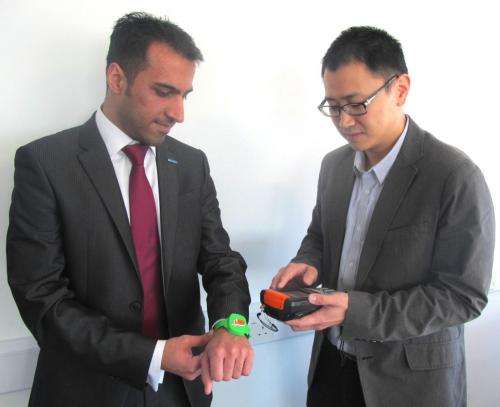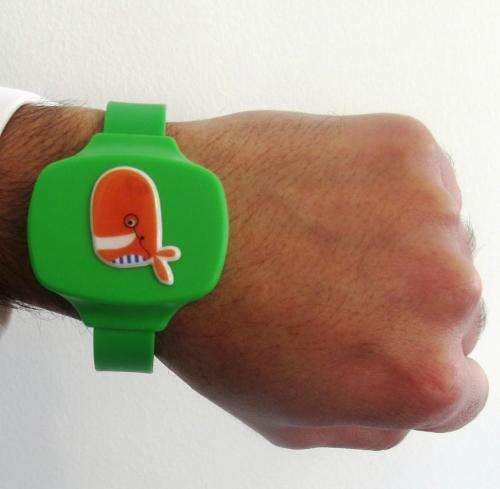Radio wristbands set to reduce risk of groups losing people

Keeping track of large groups of children or vulnerable adults could be made a lot easier for those in charge of them, thanks to technology researchers at the University of Derby.
They've developed simple 'tracker wristbands', to be worn by members of a group, which all relay a signal to one portable device held by the person responsible for the whole party. An adjustable range can be set up (of between five to 15 metres from the 'controller's' position), which then triggers an alarm on the handheld device if someone goes 'missing' and gives their full details.
The wristbands - which can be customised, for example with bright colours and animal characters for young children - are battery-driven and send an RFID (radio frequency identification) signal to the group head's device. RFID chips are used on many transported parcels, so their location and progress can be tracked via computer.
The idea originated with the University's Centre for Supply Chain Improvement, which uses its expertise in RFID technology to help the goods transport industry and other fields. The Centre has already received positive comments on the new system's potential applications and will shortly be surveying schools for their views.
Professor Ming Lim, Head of the University Centre, said: "I got the idea when I saw a teacher at a motorway service station trying to control a group of schoolchildren and having to ask other pupils whether their classmates were in the toilet, or wherever.

"Our system's very flexible. The group head's control device can be set up for different ranges, depending on the environment and who the group members are. It can then keep track of individuals in large groups, running into dozens of people.
"What we have at the moment is a working prototype, which we'd look to adapt and make smaller for commercial sale. For example, it might be sold as an off-the-shelf boxed set with one control device and eight wristbands. We can already see how it might be improved to work from a mobile phone plug-in device, or to have communicators built into each wristband."
The technology has been developed by University researchers, Drs Farhan Khan and Michael Winsper.
Aside from school trips the wristbands might also be used for groups of elderly or vulnerable people, or tourist parties.
Provided by University of Derby



















